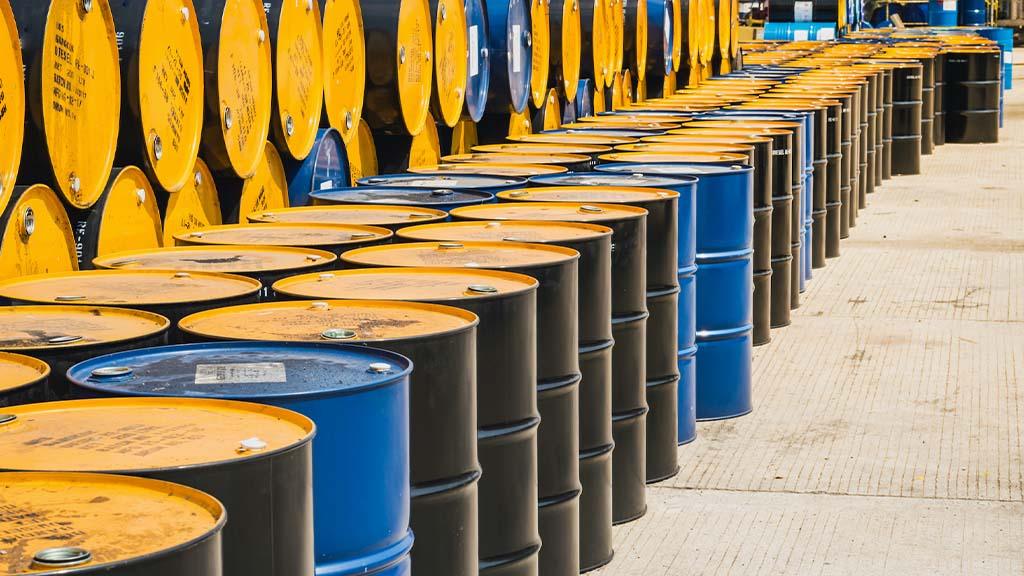The core contradiction of the imbalance between supply and demand lies in the structural expansion of the supply side.
On May 6, the international crude oil market was facing the most severe challenge of imbalance between supply and demand since the 2020 epidemic.
At the beginning of 2025, OPEC+ unexpectedly announced the gradual lifting of its voluntary production reduction plan. Coupled with the accelerated increase in production by non-OPEC + countries, global crude oil supply continues to rise. While the demand side is constrained by weak economic recovery and pressure from energy transformation, the market is worried about "comprehensive excess". Concerns have quickly evolved from expectations to reality.Goldman Sachs, Morgan Stanley, the World Bank and other institutions lowered their oil price forecasts overnight, and pessimism shrouded the market.InvalidParameterValue
The core contradiction of the imbalance between supply and demand lies in the structural expansion of the supply side.
Although OPEC+ has extended the production reduction agreement many times in 2024 to support oil prices, its policy focus has shifted to "increasing production and maintaining share" in 2025.According to the latest OPEC+ resolution, eight member states will gradually resume the voluntary production reduction quota of 2.2 million barrels per day starting in April and completely withdraw from the production reduction plan before September 2026.At the same time, crude oil production in non-OPEC + countries such as Brazil, Guyana, and Argentina is growing rapidly, especially the development of subsalt oil fields in Brazil is accelerating. It is estimated that the average daily supply increase of non-OPEC + countries will reach 1.4 million barrels in 2025, far exceeding the growth rate of demand.The U.S. shale oil industry has also recovered driven by policy easing and technological upgrades. The break-even cost in the Permian Basin has dropped below US$65/barrel. If the WTI oil price center remains in the US$60 -70 range, shale oil production may be in the second half of the year. A rebound has been ushered in, further exacerbating supply pressure.InvalidParameterValue
On the demand side, there is a differentiation pattern of "east rising and west descending".Oil consumption in OECD countries continues to shrink due to improvements in energy efficiency and the popularization of electric vehicles; while emerging markets such as India and Southeast Asia have become the main force of demand growth, their increase is difficult to offset the decline in developed economies.The International Energy Agency (IEA) predicts that global crude oil demand growth will be less than 1 million barrels per day in 2025, while OPEC is optimistic that demand resilience from non-OECD countries will support the market.Behind this divergence are actually regional differences in the energy transformation process-Europe and China are accelerating the replacement of renewable energy, while developing countries still rely on traditional energy to support the industrialization process.InvalidParameterValue
The agency's calculation of the supply and demand gap further confirms the risk of excess.The World Bank predicts that the average daily oversupply will reach 1.2 million barrels in 2025, close to the level during the 1998 Asian financial crisis and the 2020 epidemic.Goldman Sachs lowered its forecast for the average annual price of Brent crude oil to US$73/barrel, while Morgan Stanley expects the excess volume to expand to 1.1 million barrels/day in the second half of the year, and oil prices may test the US$60 support level.It is worth noting that even if OPEC+ suspends production increase, the market will still face a surplus of 950,000 barrels per day, which indicates that oversupply has become a structural problem rather than a short-term policy disturbance.InvalidParameterValue
Geopolitics and policy games inject additional uncertainty into markets.Saudi Arabia is struggling to balance between "ensuring prices" and "ensuring shares". Its fiscal balance oil price is as high as US$84/barrel. However, due to U.S. shale oil competition and the improved bargaining power of Asian buyers, Saudi Arabia has to tolerate low oil prices to maintain market share.After the Trump administration returned to the White House in the United States, its energy policy turned radical. On the one hand, it promoted the increase in shale oil production, and on the other hand, it used tariffs to pressure OPEC+ in an attempt to reshape the global energy order.If the US-Russia negotiations make progress, Russia's sanctioned crude oil will return to the market, which may further impact the balance of supply and demand.In addition, variables such as the potential reduction in Iran's crude oil exports and the risk of spillover from the Middle East conflict may temporarily boost oil prices, but it is difficult to reverse the trend of excess.InvalidParameterValue
Risks lie behind the appearance of low market volatility.At present, the implied volatility of Brent crude oil has dropped to historical lows, and the net long position of speculative funds has been greatly reduced, reflecting investors 'adaptability to policy variability and long-term contradictions between supply and demand.However, this "calm" may prepare for future fluctuations-OPEC+ idle production capacity reaches 7 million barrels per day. Once prices fall below the shale oil cost line and trigger production cuts, or geopolitical conflicts cause supply interruptions, market sentiment may quickly reverse.InvalidParameterValue

